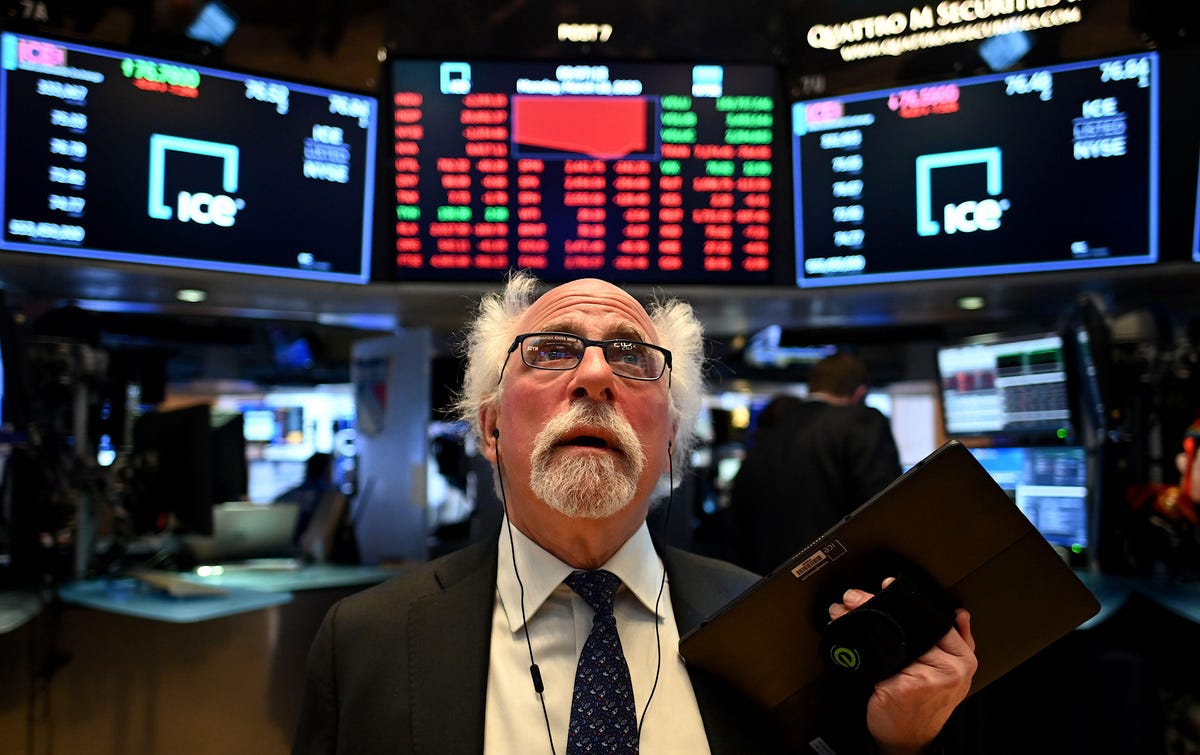
Traders work during the opening bell at the New York Stock Exchange (NYSE) on March 16, 2020 at Wall … [+]
Over the long-run stock price performance is closely tied to profits and how much investors are willing to pay for them, usually thought of as a stock’s P/E or price to earnings ratio. John Butters, Senior Earnings Analyst at FactSet, tracks the S&P 500 revenue and earnings forecasts with details by sectors and publishes a weekly analysis.
His recent data shows that analyst’s projections for earnings growth has stalled over the past two weeks. This isn’t too surprising due to the various economic uncertainties that have increased the past month, along with September quarter financial results coming out in October. Analysts will tend to wait until they have clarity on what the results were and a better understanding of the future if companies provide guidance.
The chart below represents the S&P 500’s earnings (the black line) and the Index’s value (the blue line). As can be seen in the first third of the chart stocks were being valued at a lower ratio than the middle portion and since early 2020 valuation ratios have increased.
S&P 500 Index vs. Earnings
Note that the uptick in EPS that occurred in late 2017 and early 2018 was due to the corporate tax rate being lowered from 35% to 21%.
Earnings growth has stalled
MORE FOR YOU
The S&P 500 earnings are expected to increase by 9.3% in 2022 vs. 42.9% this year as can be seen in the graph below. Profits have not just rebounded back to 2019 levels but are far exceeding them this year and next.
- 2017: $133.61
- 2018: $161.56, up 20.9% (driven by tax cuts)
- 2019: $163.12, up 1.0%
- 2020: $140.46, down 13.9%
- 2021E: $200.66, up 42.9%
- 2022E: $218.60, up 9.3%
S&P 500 Earnings, 2011 to 2022
However, over the past two weeks both the 2021 and 2022 forecasts have decreased slightly. In Butters’ September 10 report 2021’s and 2022’s EPS estimates were $201.53 and $219.83, respectively. In this past Friday’s note they had decreased slightly to $200.66 and $219.32, respectively.
While these are very small declines, they do represent the first ones since late March. This could just be a stall before companies release their September quarter results and provide some guidance for the December quarter.
S&P 500 2021 and 2022 EPS forecasts
GDP growth seems to be slowing
After the economy plunged in the June 2020 quarter due to the coronavirus it rebounded strongly in the September 2020 quarter. In the first and second quarter this year the Bureau of Economic Analysis estimates that the economy grew 6.3% and 6.6%, respectively.
U.S. GDP growth
The latest GDPNow forecast for the September quarter has the economy growing at 3.7%. And the average of the Blue Chip consensus is at 5%. It isn’t surprising to see these estimates decrease, as the Delta variant of the coronavirus seems to be impacting the economy.
September quarter GDP growth forecasts




